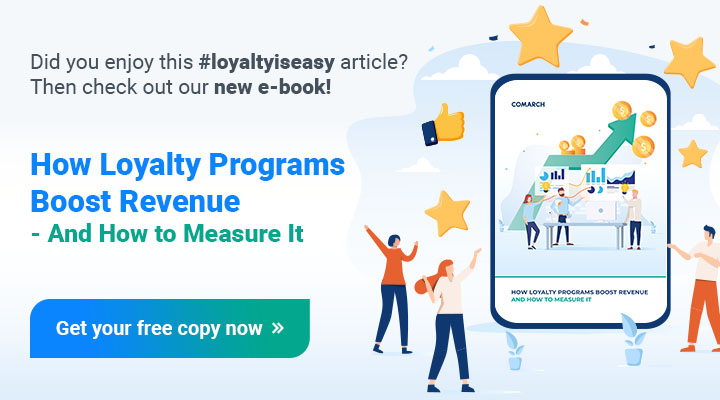How to plan loyalty promotions to increase sales without decreasing your margin
- PublishedLast update
- 2 min reading

In theory, preparing simple promotion is not a complicated task. A loyalty program operator chooses promoted products and external partners, adjusts promotion mechanisms, and specifies the possible incentives. In practice, preparing promotions that achieve the set goals requires a bit more work. The program operator should consider two key factors to find a golden solution. The first is the attractiveness of the promotion – the number of customers expected to participate, which can increase the income. The second applies to the promotion costs, which are strictly related to product margin and can decrease the revenue. There are several possible approaches to using promotions in a loyalty program and ways to increase sales without lowering your margin.
1. Increase the average basket value. The program operator can use attractive incentives – such as extra loyality points or free shipping – to increase the average purchase value. The key to success is to make it profitable for the customer to add another product to the cart to reach a certain threshold. The value should be at a slightly higher level than the average value of the basket. For example: the average basket value is 45,5 EUR. If the threshold is a minimum of 50 EUR purchase, the customer should be willing to purchase additional products. In this case, the average person who decides to increase the basket value to 50 EUR increase revenue by almost 10%.
2. Create promotional sets. The aim is to offer product sets at a lower price than when purchased individually. Promotions like 2+1, 3+1 are relevant examples. This technique not only encourages customers to buy more than usual, but is also a great way to promote particular products of frequent consumption, or disposable items.
3. Use the inaccessibility effect. Research and market practice shows that customers can spend more for a product when availability is limited. The examples of special, limited-edition collections are found in almost all industries. Companies also adapt time-limited strategies and sell products only in a specific, restricted time.
4. Offer more for bulk purchase. Customers who buy large amounts deserve to receive additional incentives. It can be a form of benefits, premium service, or extra loyalty points. Handling one large order is generally cheaper than a lot of small ones. Prudent loyalty program operators benefit from this dependency.
5. Avoid making discounts for bestsellers and new products. If some products sell well, discounting their price for increasing sales may result in lower pricing of the product on the market in the long run. A similar rule applies to new products. By lowering the price at the beginning, customers perceive this as a message that the product is not worth the standard price. For new products and bestsellers, to increase sales, the better option is to offer an additional incentive. It should be a solution that is of value to the customer and which does not directly affect the price. Some examples of this are complementary products, free shipping, or extra loyalty points.
Every business is different, so we recommend a thorough analysis of your situation and adapting the above strategies to your company. Price reduction is the ultimate solution that can always be applied.
You may also like:
7 steps to developing effective promotions



